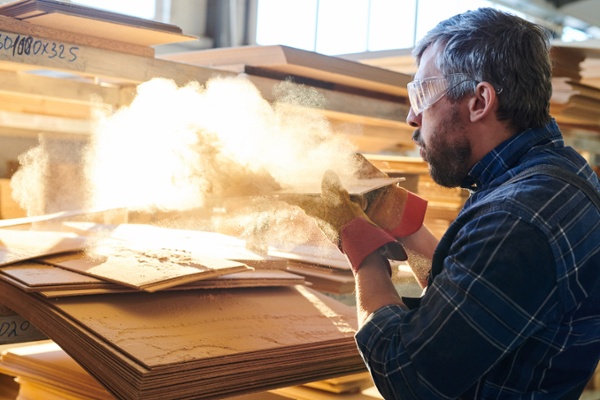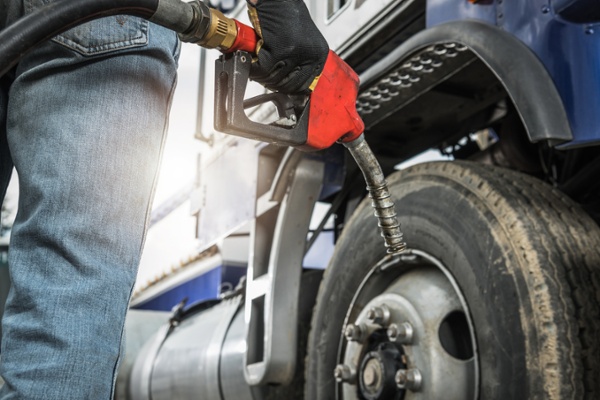When chemicals or substances have labels, GHS pictograms and safety data sheets, it’s a straightforward process to understand what hazards they pose. For example, a toxic gas or a corrosive substance would be included in your chemical risk assessment, because they are a known hazardous substance that risk to your team. But what about other substances that may be excluded from your risk assessments? In this post, we look at 3 of the most common and dangerous substances that are often overlooked in risk assessments.
REMEMBER: When managing the risks of hazardous chemicals at your workplace you need to ensure that all hazardous substances — including the ones generated by work activities and chemical reactions — are identified, assessed, and controlled.
What Is A Risk Assessment For Hazardous Substances?
Risk management is a duty under WHS law to help protect the staff in your workplace from chemical and other hazards. The process for managing these hazards includes the identification, assessment and control of hazards, along with the sustaining of safety and compliance through further inspections, assessments, audits and maintenance.
A risk assessment in a systematic process that will assess the severity of risk in your workplace, allowing you to develop the correct controls to minimise the risks.
While workplaces with dangerous goods and hazardous chemicals will conduct a risk assessment factoring in these substances, there are other substances that may be overlooked in the assessment.
Substances That Can Be Overlooked In A Risk Assessment
Workers can be adversely affected by substances that may not be technically classed as a hazardous chemical. These may be the byproduct of a task involving hazardous substances or a type of substance created by the tasks in the workplace.
Regardless, there are substances which can cause physical harm to your workers – which may result in acute or chronic illnesses.
In this post, we’ll be detailing 3 of these substances, including:
- Welding fumes
- Wood dust
- Diesel exhaust
IMPORTANT: Safe Work Australia explains that risk management is a systematic process that allows businesses to respond to changes in the workplace, as well as practice continuous improvement. Your risk management plan should consider all hazards as well as their associated risks.
1. Welding Fumes
Workers exposed to welding smoke and fume can quickly suffer from dizziness and nausea as well as eye, nose and throat irritations. And prolonged exposure is even more serious — lung and kidney damage, ulcers, different types of cancer are all possible.
The severity of chemical hazards created by welding fume will depend on the:
- Type of welding process (eg, electric arc, gas, thermit)
- Base metal being welding and the filler materials used
- Chemical properties of the welding rod
- Work practices and technique of the welder
- Air movement and ventilation controls

Welding fumes can cause harm to the people conducting the work, as well as those in the general work area.
How Can You Manage Hazards Associated With Breathing In Welding Fumes?
When conducting welding in the workplace, it’s essential that staff are equipped with the environment and the knowledge to safely manage the hazards associated with welding fumes.
Controlling the chemical risks in welding is usually carried out through a combination of:
- Elimination Controls - outsourcing welding work
- Substitution Controls - finding welding consumables that are less toxic or generate less fumes
- Engineering Controls - using local exhaust ventilation (LEV) systems to clear welding fumes and gases from the breathing zone of welders
- Administrative Controls - ensuring staff are thoroughly trained to clean welding surfaces properly which removes potential toxins. Welders should also be trained in how to position themselves to avoid breathing welding smoke
- Personal Protective Equipment - providing workers with suitable respiratory protection that fits well and is appropriate for the gases being used
2. Wood Dust
Wood dust has been associated with a wide range of ailments from dermatitis to respiratory illnesses and even cancer.
When workers contact or inhale irritant compounds found in the sap, they can become sensitised to the wood dust which then produces skin and eye irritations, allergies, nasal dryness, and prolonged colds.
Wood dusts are often present in the daily work environment of workplaces that undertake:
- Carpentry and joinery
- Timber milling
- Furniture making
- Prefabricated wood building and component making
- Paper and pulp milling
- Reconstituting wood into products
In Australia, there is a workplace exposure standard for both hardwood dusts (eg, oak, beech) and softwood dusts (eg western red cedar) — as some of these wood dusts are known to cause nasal cancer. The workplace exposure standards list airborne contaminants that must be controlled in the work environment to minimise harm to the employees who are exposed to the substance. While many hazardous chemicals are on the workplace exposure standards list, these hardwood and softwood dusts are also a hazard which must be identified and controlled.
Workplace engineering controls, like exhaust hoods with an air-cleaning devices, can be effective in reducing wood dust. These controls are more effective when implemented in conjunction with suitable PPE (well-fitted masks) and safe work methods (eg, never sweeping or using compressed air to clear wood dusts). It’s also vital that good housekeeping is maintained to reduce the build-up of dust in the premises – as well as the ventilation systems.
Apart from their acute and chronic health hazards, certain wood dusts are also capable of igniting and exploding. In fact, any enclosed work area where combustible wood dust is present (even areas partially enclosed by walls or equipment) has a dust explosion risk.
The most common places where wood dust explosions occur are dust collectors and other areas where waste materials accumulate.
Like to learn more about hazard identification?
Dust explosions are serious stuff. A fireball, caused by ignited dust, could completely engulf one of your workers and destroy your premises. The severity of an explosion depends on the type wood, concentration of the dust, particle size, moisture content, size of the ignition source, and the surrounding area (is it fully enclosed).

Dust can create health hazards and physical hazards, such as explosions, if the particles aren’t properly controlled.
3. Diesel Exhaust
Diesel exhaust can irritate the nose and eyes, but repeated and prolonged exposure can lead to respiratory illnesses (asthma) and cancer.
There are many industries where workers are placed at risk by diesel exhaust, but exposure generally occurs in the following 3 ways:
- Workers are operating, repairing or working with diesel powered vehicles: forklifts, buses, trucks, heavy machinery, farm vehicles, trains, diesel generators, winch motors
- An enclosed work environment accumulates diesel exhaust: warehouses; garages; fire stations; mines; hire car, taxi, and bus depots; vehicular ferries; underground car-parks; tunnels
- An open environment is exposed to high levels of exhaust: traffic controllers; police, toll operators; airport ground crews; farm workers; truck and vehicle loaders; fuel station operators

Diesel, while a common fuel, can create serious health problems if the exposure is repeated or prolonged.
Diesel emissions and air quality can be difficult to control but there are a range of control measures that can be effective including:
- Elimination Controls - replacing diesel powered engines with electric vehicles, replacing toll booth operators with electronic swipe cards
- Substitution Controls - using low-emission vehicles and alternate fuels
- Engineering Controls - running vehicles outdoors rather than indoors; installing exhaust extraction devices and other ventilation systems
- Administration Controls - keeping vehicles maintained, turning off a vehicle instead of letting it idle
- Personal Protective Equipment - having staff wear respirators and face masks
IMPORTANT: You may need to carry out personal monitoring to determine inhalation exposure and assess the level of risk to the safety of your workers. This would involve collecting air quality samples from the breathing zones of workers.
Risk Assessment For Hazardous Substances
Need to conduct a full risk assessment on hazardous substances — not aren’t sure how to go about it? We detail the systematic approach to risk management in our eBook, How to manage the risk of Hazardous Chemicals in the workplace. We detail how a risk management methodology can simplify your risk assessment efforts and ensure that nothing is missed. Download your copy today to find out more about identifying, assessing and controlling risk in your workplace.
Joining the team as a Dangerous Goods Storage Consultant, Melissa Hampton became Storemasta's Marketing Manager in late 2021. With extensive knowledge and experience in chemical compliance, Melissa is responsible for leading the Marketing team and helping shape their marketing strategy. In her spare time, you can find Melissa hiking, swimming and enjoying the great outdoors in beautiful north-west Tasmania.

